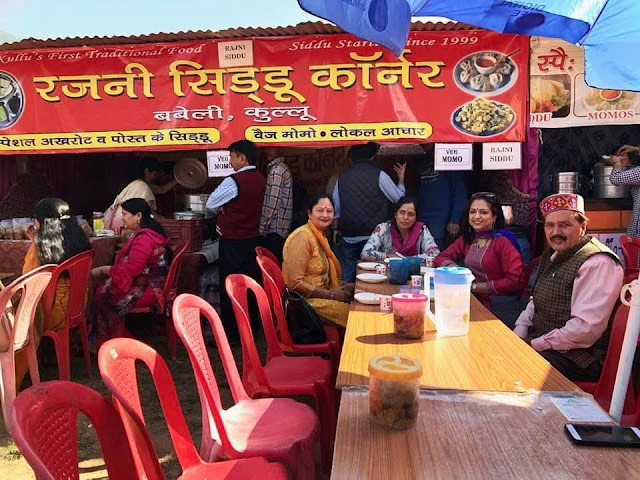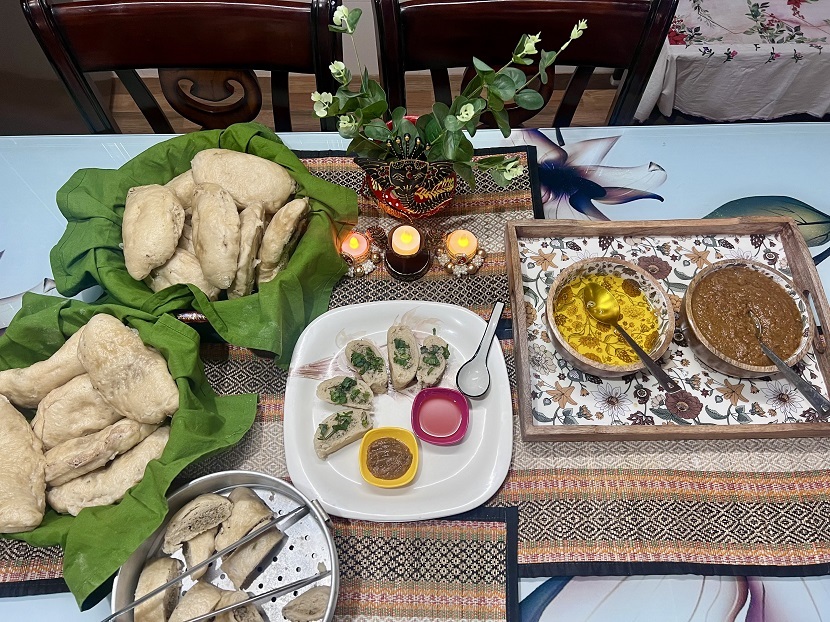
The moment anyone asks me – Siddu khaogi (will you eat Siddu)? And I am – Yes..Yes..Yes..- even after a full meal. It is beyond doubt my most favorite dish of Himachal these days. Not only me, many in the state also swoon on freshly steamed Siddu with desi ghee.
The story of Siddu has been an interesting one for me. I was in Himachal from 1991-2007 and was not even aware of it; but when I returned to the state in 2016, I was pleasantly surprised to find that Siddu was almost everywhere – Tourism Hotels, local eateries, parties and in all Melas. It had assumed the status of being – the Himachali Dish – to be tasted and savored.
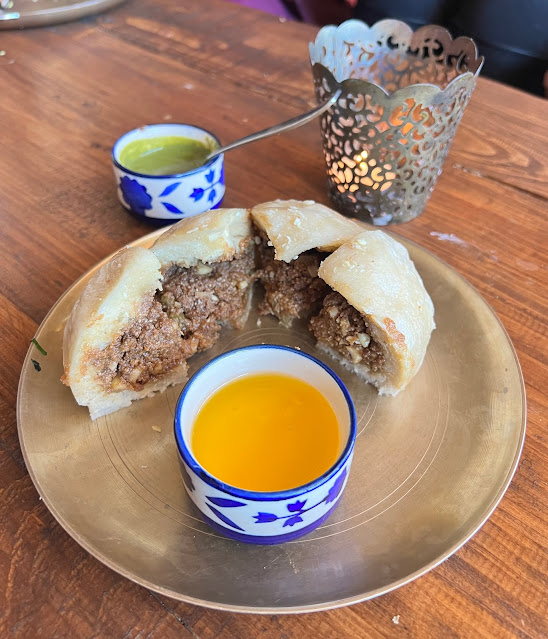
In my Blog “Craft, Culture and Cuisine” – the cuisine has not featured till now. So here it is and what better than the state’s favorite to start with. Since I also wanted to learn how to prepare them; I requested a dear friend Anita (also my colleague) to teach me. Her Siddu’s are one of the finest and tastiest that I have eaten till date.
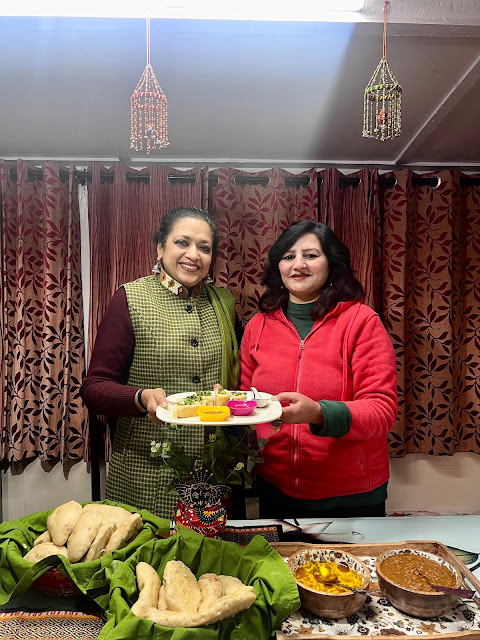
The moment anyone asks me – Siddu khaogi (will you eat Siddu)? And I am – Yes..Yes..Yes..- even after a full meal. It is beyond doubt my most favorite dish of Himachal these days. Not only me, many in the state also swoon on freshly steamed Siddu with desi ghee.
The story of Siddu has been an interesting one for me. I was in Himachal from 1991-2007 and was not even aware of it; but when I returned to the state in 2016, I was pleasantly surprised to find that Siddu was almost everywhere – Tourism Hotels, local eateries, parties and in all Melas. It had assumed the status of being – the Himachali Dish – to be tasted and savored.
In my Blog “Craft, Culture and Cuisine” – the cuisine has not featured till now. So here it is and what better than the state’s favorite to start with. Since I also wanted to learn how to prepare them; I requested a dear friend Anita (also my colleague) to teach me. Her Siddu’s are one of the finest and tastiest that I have eaten till date.
Siddu, originally, is the dish of old Mahasu (old Shimla district) and from there probably travelled to Kullu, Mandi and Sirmour – and now to the entire Himachal and across. Historically it is quite difficult to trace the origin of Siddu like any cuisine as it develops over the years entwined with different traditions which gets altered with migration of population.

The preparation of Siddu probably started as a one meal nutritious dish when extended family, friends and helps gathered for agricultural activities (Guraai), especially transplanting of paddy (Saawan ki Roopni) and other construction activities. It was easier to cook to save time as every hand was required to help with the work. It is also said that during Saawan ka Sajja (Sankranti) – Siddus were distributed as part of celebrations. Slowly, over time, Siddu must have become an integral part of the local cuisine, deeply rooted in the cultural traditions and celebrations of Himachal Pradesh as an exotic special dish.
Interestingly, Siddu showcases regional diversity within the state in its size and shape, in its recipe and in the way it is served. Different areas offer their own interpretations of this dish.
Siddus are both sweet and salty- though salty are preferred over sweet ones. They also are cooked in many shapes – most common being round and triangular -with variety of fillings linked to the area it is being prepared in. Traditionally, in old Mahasu district, poppy and walnut filling is favored and also of Bangjeeri (local Chia seeds) whereas in Mandi and Kullu it is the lentil filling. Mandi can also have a filling of minced meat. We also have plain Siddu to be eaten with daal (cooked lentil). The sweet Siddu have poppy and walnut filling sweetened with Jaggery. Now a days the Siddus are being experimented with fusion fillings and variety of accompaniments – some good and some not so good.
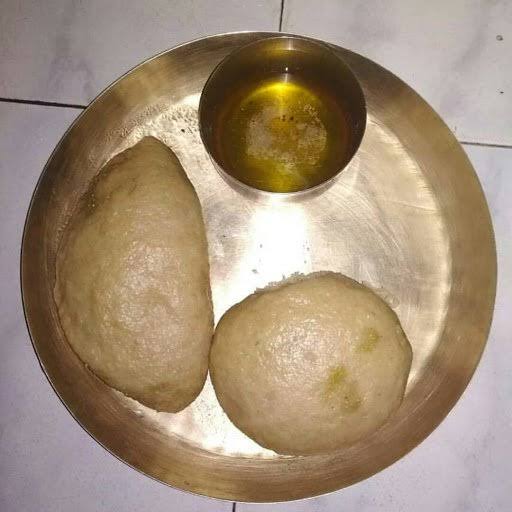
The style of cooking has also altered over times. Earlier they were stuffed and put on hot tawa (flat pan) to be cooked on one side and then steamed in a big vessel which used paddy husk (purali) as a base. Now they are cooked in the steamers which are used by Tibetans to steam their momos.
Interestingly, Siddu is cooked as an exotic dish for guests; is carried over to relative’s places as gifts; is sent with brides when she returns to her in-laws place and also prepared during ‘gammi’ (bereavement times) in Kullu and Mandi. In earlier times, the act of making and sharing Siddu strengthened social bonds and fostered a sense of togetherness, as families come together to prepare and enjoy this cherished delicacy. Now a days it is more individualistic and commercial.
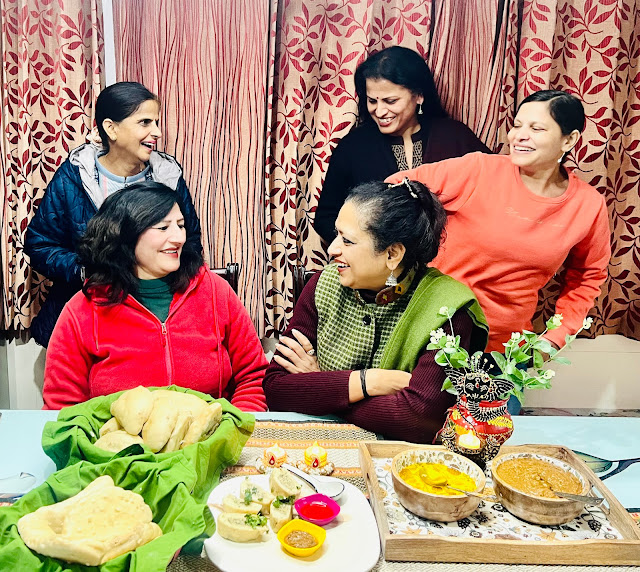
I still remember the first time I had Siddu in 2016. It was served with lots of fanfare – describing all its health benefits and traditional linkages – with ghee and walnut chutney. I was a bit apprehensive as it didn’t look hugely appetizing – but I tried it. First bite of fresh hot Siddu and I was won over for life. I will say the magic was the combination of fermented whole grain flour and lentil filling having a distinct spicy aroma. It being served with ghee created a taste which I had never tasted before – earthy, spiced and tangy all together.
The preparation of Siddu involves meticulous process. The tricky part is the kneading of the dough with yeast to have the desired softness and elasticity and enough rise. If the dough doesn’t rise well the Siddus don’t taste good. The taste of the filling also depends on the spices used in required quantity. Once the dough rises, it is carefully divided into portions, filled and folded well and steamed. I learned that Siddu making is not difficult – but it requires precision, practice and lots of love – like Anita demonstrated. I am not sharing any recipe here as they are easily available on internet.

Now I come back to my original observation – how and why Siddu has gained so much mass popularity in past 7-8 years?
Three things – its taste, it being fermented and steamed and it being a complete nutritios meal. Easy to eat and easy on pallet and stomach. Also the accompaniments allow the eater to adjust the taste as according to one’s liking – mild or spicy.

One more thing which helped Siddu gain popularity is its easy availability in the markets now. Siddu was and is a special dish which was not cooked regularly at homes. But, as the Chef Nand Lal of Himachal Tourism says that it started gaining popularity once in was introduced in the menu card of the Tourism hotels, in Himachal Bhawan at Delhi and Chandigarh and was encouraged in all the Melas.
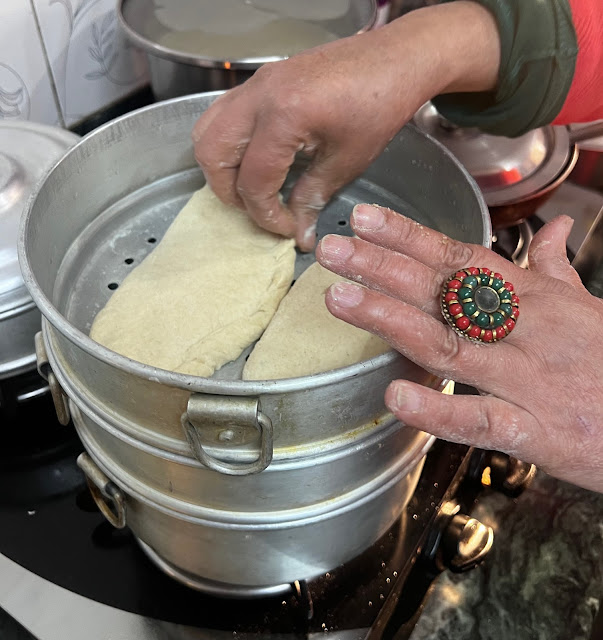
‘Rajni ke Siddu’ in Kullu Dussehera are the maximum crowd puller and so are Mandi ‘ke Daal wale Siddu’ which are now regularly available in Mandi town. In Shimla – the ‘Himachali Rasoi (in the middle Bazzar), ‘Hotel Holiday Home’ and recently opened ‘Café Khoblu’ (at Sanjauli Chowk) offers a wide variety of them. Café Khoblu also provides the Himachali ambience to compliment the Siddu. We also have chain of Siddu outlets – ‘SiyaRam Siddu’ in Narkanda, Phagu, Theog, and Mehli, Shimla started by Mr Jagdish Chauhan, a retired officer of Tourism department. They also offer Siddu making demonstrations. Similarly all big towns in Himachal have eateries offering Siddu – regularly or on demand. In the recent Him Mahotsav at Dilli Haat, Siddu was the most popular dish at the Himachal Food stall.

Jo bhi hai – for me – I am ever ready to have a hot steaming Siddu with ghee and spicy tomato garlic chutney. Simply divine. Do try whenever you all get an opportunity.

Dr. Anurita Saxena is an Associate Professor of History and teaches in the Government College for Girls in Shimla. She is a post – doctorate from JNU with specialisation in Environmental History. She hails from UP but has made Himachal her home since past 32 years. She has keen interest in all aspects of Himachali crafts, cuisine and culture. An enthusiast for life, she loves to trek, play Golf and Bridge, sing and dance and be a Vipassna practitioner. She conducts sessions on Communication Skills and personal grooming and is a Casual compère with Himachal Doordarshan. She can be contacted at [email protected]


